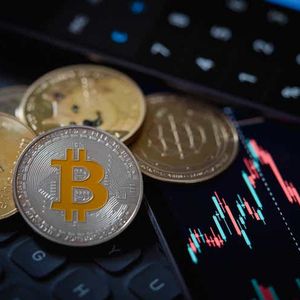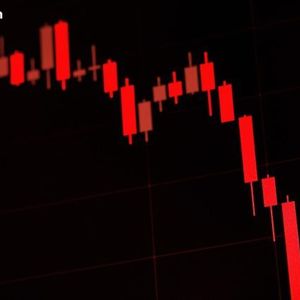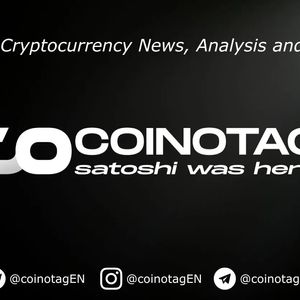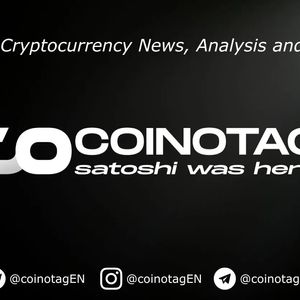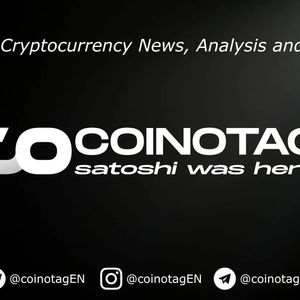Summary Galaxy Digital Holdings has seen a nearly 100% increase in stock price since November 16, even outperforming Bitcoin as of mid-May this year. The company's asset management segment is growing but could suffer from deceleration due to lower digital asset prices, while volatility risks may impact the derivatives business. There are also the after-effects of Bitcoin halving to contend with. Despite near-term volatility risks, there is long-term upside potential. Its price action versus Bitcoin shows the degree to which expectations have risen due to favorable catalysts. Since I last covered Galaxy Digital Holdings ( BRPHF ) in November last year in my bullish piece entitled " Diversified Exposure To Bitcoin Mining (Rating Upgrade)", it is up by nearly 100% as shown in the orange chart below . Seeking Alpha The price action also shows that after having shadowed Bitcoin ( BTC-USD ), it has started outperforming since mid-May. This was mostly helped by revenues for the first quarter of 2024 (Q1) surging by 79% YoY to $259.7 million, its asset management segment switching back to growth for May, and the partnership with SSGA (State Street Global Advisors) to create new ETFs. However, since digital asset prices have depreciated in Q2, this implies volatility risks for the derivatives business and the Bitcoin halving event may delay breaking even for mining operations. Thus, after high expectations have been baked into the share price, this thesis aims to show that the stock could suffer when results are announced in August. I start by analyzing Q1's financial results, which were announced on May 14, and also included those for Galaxy Digital Holdings LP (limited partnership). Q1 Benefited From A Surge in The Price of Digital Assets First, for the sake of clarity, the relationship between these two Delaware-registered entities follows a typical corporate structure where Galaxy Digital Holdings is the publicly traded entity contributing to strategic direction whereas the LP operates the four reportable segments whose income statement is shown below. Starting with mining, which is at the very heart of the Bitcoin ecosystem, it forms part of the Digital Infrastructure Solutions segment where a total of $38.4 million were obtained as sales when including lending and staking revenues. Out of this $31.5 million was generated from proprietary mining and hosting which represents a 200% YoY increase, mostly as a result of rapidly scaling the Helios facility acquired from Argo Blockchain plc ( ARBKF ) in December 2022. Income of the reportable segments (investor.galaxy.com) Now, since BTC appreciated by 54% in Q1 and declined by around 4% in Q2, there should be a reduction in QoQ income since the Bitcoin halving event on April 19 resulted in rewards (or subsidy) dropping to 3.125 BTC from 6.25 BTC for each block mined and added to the blockchain. Furthermore, with more miners competing on the network the average difficulty is about 60% more than one year earlier as shown in the chart below, increasing the cost to mine, thereby reducing profits. Now, as per the management update, mining gross profits for April which includes pre-halving and post-halving activities were mostly aligned with March figures (which exclude halving effects) due to more on-chain fee activity whereby the data is recorded directly into a blockchain. Another contributory factor was the optimized energy management plan using lower-cost power and software-driven mining operations. Data by YCharts However, the mining business despite including revenue from lending and staking was not profitable in Q1, delivering an income loss of $559K. Therefore, the halving and difficulty combination exacerbated by BTC remaining $13K below its Q1 peak of $73K could delay break-even. Despite this loss, Galaxy remains profitable as a whole and generated a net income of $421.7 million, thanks to two other segments, Global Markets and Asset Management. Looking Closer at Asset Management and the Derivatives Business After peaking at $7.8 billion in March as shown in the chart below, AUM for April decreased by 27.3% with one of the reasons being "market depreciation", or the value of digital assets falling. Table built using data from Seeking Alpha The other reason for the decline was the continued liquidation of assets associated with the FTX bankruptcy. This includes FTX's shares of Grayscale and Bitwise investment funds consisting of Bitcoins and Ethereum ( ETH-USD ), which Galaxy secured last year, contributing to increasing the value of its assets. Furthermore, May's AUM increased by 10% relative to April despite FTX assets continuing to be liquidated, but this is far below the 32% achieved in the June to December period as shown by the yellow dotted line above. This is because the price of Bitcoin has remained below $60K while the FTX-related portion of the AUM continues to decrease over time. This implies that unless Mike Novogratz's company manages to secure (buy) more assets from bankrupt crypto companies, June's AUM will likely continue decelerating, especially if Bitcoin does not rise. Now, lower digital asset prices may also lead to lower revenues for the Global Markets segment where counterparty trading revenue increased by 79% QoQ, but this was mainly driven by its derivatives book which grew more in Q1 than the whole of 2023. In this context, given the dynamic nature of the crypto market, counterparty trading could be subject to market volatility risks. Switching to a more positive note, it is unlikely to face liquidity risks given that digital asset prices have not plummeted. Also, its book loan size of $664 million remains far below its total assets of $5.4 billion, versus liabilities of only $3.2 billion. Also, Galaxy held $247.2 million of cash at the end of March, down from $316.6 million at the end of 2023, but its balance sheet should benefit from a $125 million equity capital raise. Additionally, the dollar value of its digital assets was $2 billion, or double the amount held 3 months earlier, including $269.4 million of Stablecoins. Expect Near-Term Volatility Still, looking across the industry, halving has created uncertainty for miners as it has reduced their rewards by half in a period where financing costs remain high due to elevated interest rates, and not all of them have access to cheap power and operate as diversified entities in a way that can mitigate the impacts. Thus, as their profit margins get squeezed, they have been compelled to sell more of the Bitcoin they HODLed earlier, thereby increasing the supply and pressurizing asset prices. Therefore, unless there are clear signs that miners have adjusted to the post-halving scenario, the demand-supply equation is likely to be skewed to the latter, resulting in lower BTC prices. Shifting to Galaxy's role as an asset manager and coming back to the partnership with SSGA, this is one of the largest fund issuers with $4.14 trillion of assets under management. Moreover, its collaboration with Galaxy should see the launch of more sophisticated investment vehicles in the crypto space. Now, while this could represent product differentiation, one has to be realistic that there is already tough competition in the space with spot, futures, and equity ETFs. Consequently, it is preferable to wait for the ETF to be issued first and assess whether investors are attracted to them in the same way as the spot ETFs launched early this year. For this matter, after the initial frenzy, these have suffered from net outflows during the last three months, including the popular iShares Bitcoin Trust ETF ( IBIT ). In the same breath, after a lot of enthusiasm, after the SEC approved 19b-4 forms for the Invesco Galaxy Ether ETF, the reality is that there are seven other competing products, meaning that fees may have to be kept low to encourage inflows. Consequently, it was market optimism based mostly on positive news updates (as illustrated below) that propelled the stock higher and outperformed BTC by 15%. Henceforth, as reality bites, the stock could suffer from the same percentage of downside, especially in case of lower-than-expected ETF inflows and Galaxy's AUM showing slow progress in June. Thus, it could fall to $9.8 (11.5x0.85) based on its current share price of $11.5. Chart built using data from Seeking Alpha To further justify my cautious instance, the assets management business could post lackluster growth until Bitcoin goes back to its all-time high of $73K in Q1. Additionally, Galaxy boasts $514.8 million in Bitcoin spot ETF investments which has largely benefited from an uplift thanks to digital asset prices surging in Q1, but could henceforth suffer from outflows in case investors switch part of their crypto allocation from BTC to Ether, all in the name of diversification. Long*Term Potential Remains Intact Looking beyond volatility, its forward price-to-sales of 2x while being 30% above the ratio of 1.55x it was trading back in November last year, is still 25% below the median for the financials sector as shown below. Seeking Alpha This means that could represent an opportunity, but this is conditional to its mining business navigating the post-halving period while controlling operating expenses. For this purpose, it could be helped by its lower pre-halving cost-to-mine of about $19.5K per Bitcoin, compared to the industry's average break-even point of $23K. Additionally, network difficulty has seen a reduction from its peak of 88 as shown in the Bitcoin Average Difficulty chart above. Also, the Bitcoin network hash rate continues to decline as charted below due to fewer miners participating in production resulting in less competition for existing ones as it reduces transaction fees, which augurs well for Galaxy. Data by YCharts Furthermore, some miners could also go out of business, representing an opportunity for the diversified crypto play to acquire distressed assets at advantageous prices. To this end, one of the objectives of raising equity capital was to expand its mining activities for a company that is diversified across the crypto ecosystem, especially, in a conducive environment where the approval of spot ETFs both for Bitcoin and Ether signals that regulators are recognizing crypto as legitimate investment assets. Finally, progress has been made as to its U.S. listing, through responding to the SEC's queries and by adopting fair value accounting standards for crypto assets as per the FASB or Financial Accounting Standards Board.


